SUPER 10 bolt rear end built by tracdogg2 (Mike) and PaulDana. Cyro, REM, 30spline..
#1
Race Director


Thread Starter
Ok... As some of you may know I started a thread asking what was the BEST ring and pinion... that was when I thought I popped it.... BUT, the Richmond Ring and Pinion was good... it was the Eaton carrier that was popped.... and the half axles were twisted....
Well, I knew I did not want to go through this again, and with my 650hp 427 it was going to happen over and over again until i do something different... So, I say out to do just this.
One of the first choices was to go to a 12 bolt by Toms... The problem I had with that is the 12 Bolt does not come in the 3.55 ratio that was best for my road racing which match my gearing well.... and i knew the 12 bolt was much heavier to spin up and pull down... Two things that were not acceptable to me... so, there's got to be another way...
So, I set out to build a SUPER 10 Bolt rear end... and here it is....
I will have to let Mike, tracdogg2 give most of the story of what the differences are and how different this rear end is...
My Boys, Danny and Chris, and I have assembled several rear-ends and it is a couple of hours job,,, thats for a standard rear-end,....... this was anything but standard. Mike had to do lathing milling and machine work to make all the larger pieces fit...like larger pin, larger half shafts, and more....
SOME of the differences are:
30 spline half shafts, as compared to 17 spline stock
larger half shafts
larger pin
all gears and all parts completely heat treated, not just tips
known strongest USA made ring and pinion US GEAR
ALL parts Cyro treated
ALL parts REM coated
All parts hand demurred and polished
heavy duty forged cap
Quote from Mike:
I have to admit the cryo did something to the metal. It is definitly denser and harder to cut compared to any other carrier.
Mike
He also stated to me that he had to slow down the lath to 25rpm, something he has never had to do, and went through 3 bits... as he usually never even goes through even 1... this is hard metal.
here are some pics, the first is a video, click it to watch.
2
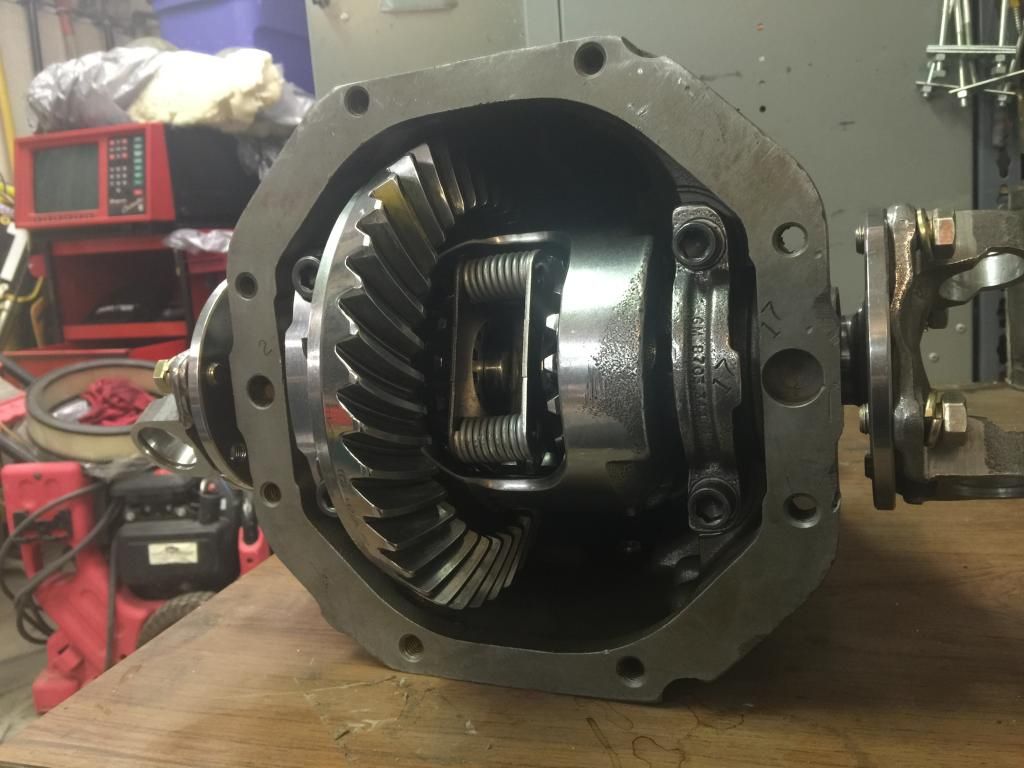
3

4
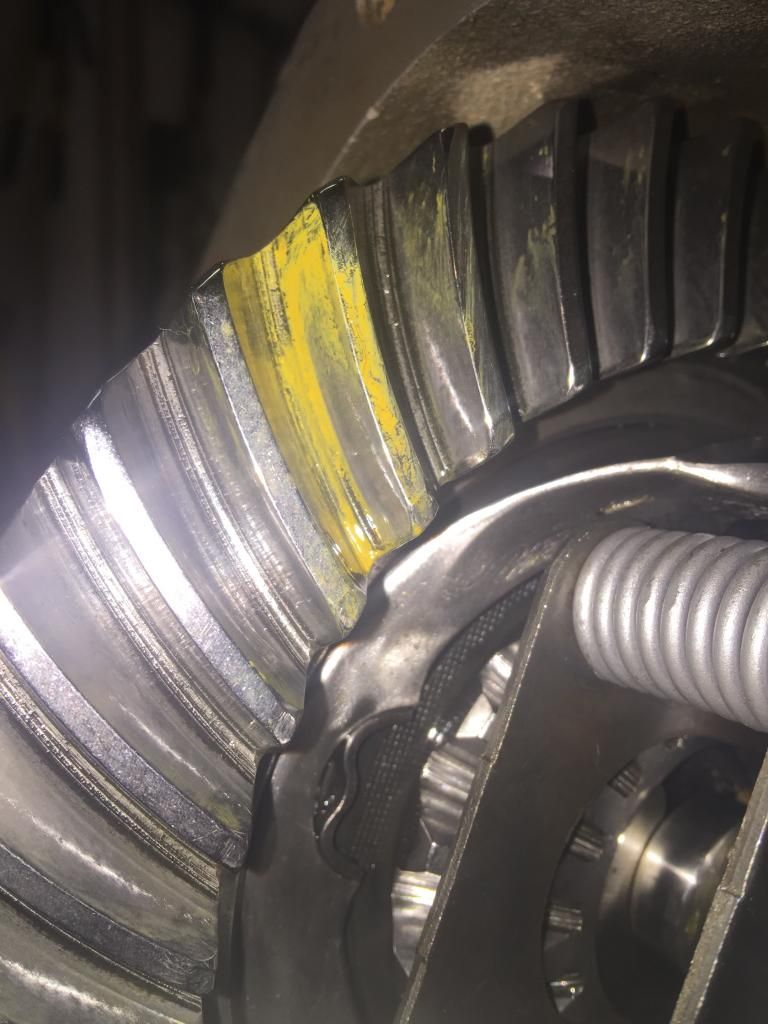
5
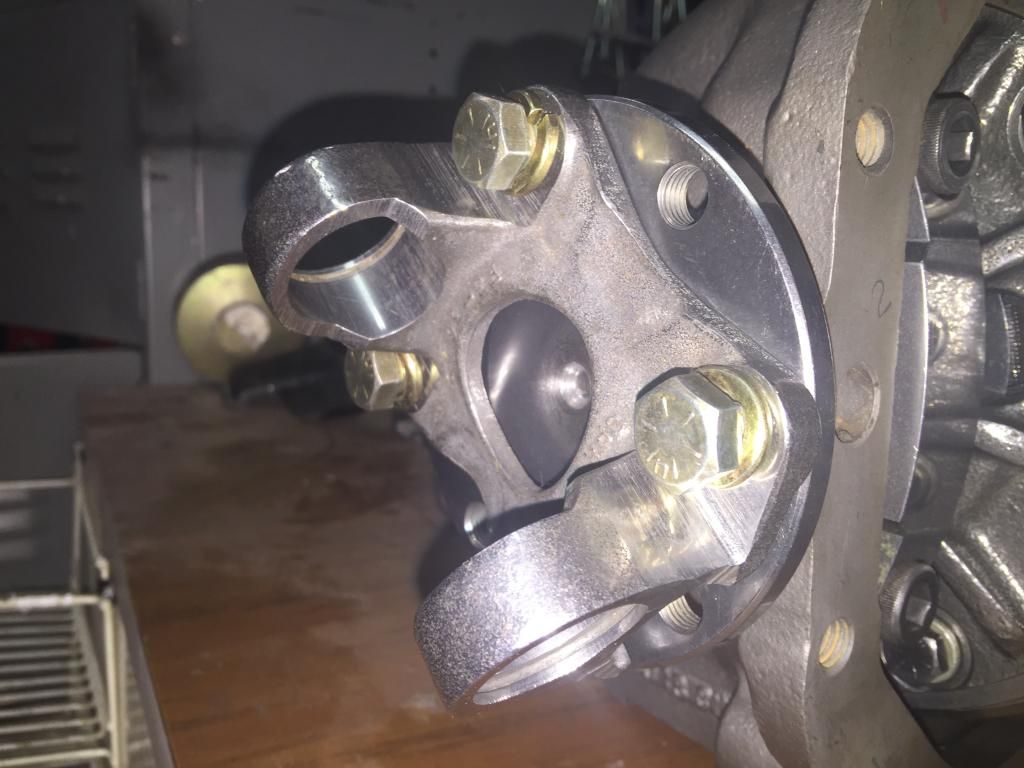
6

7
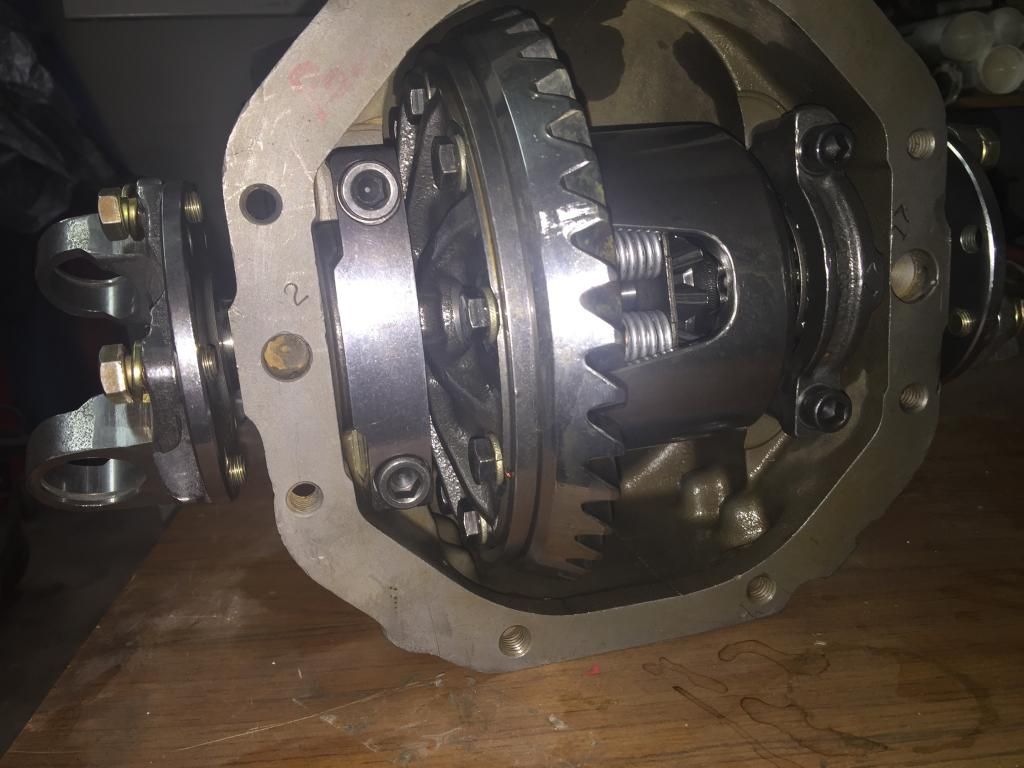
8
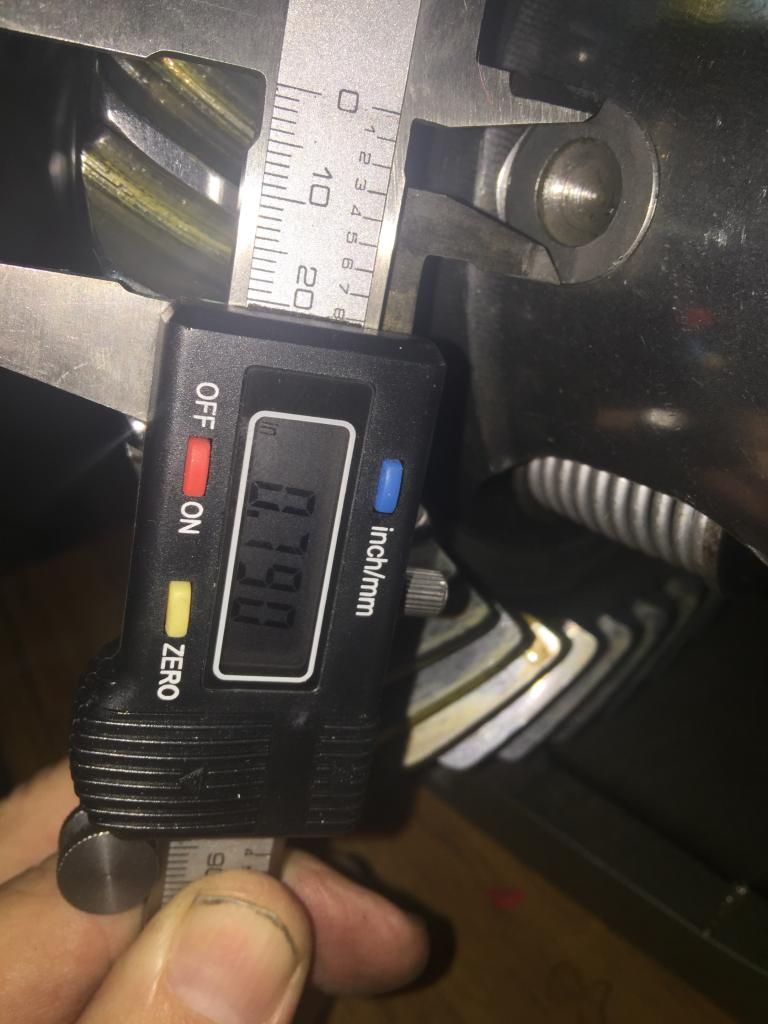
9
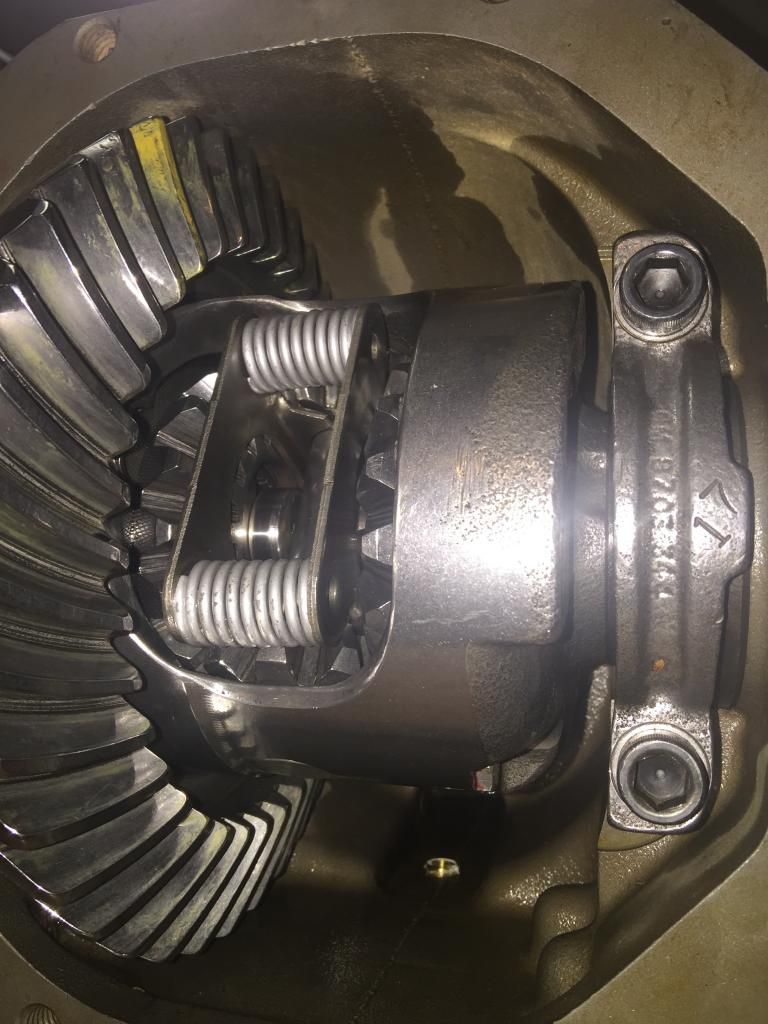
10

11
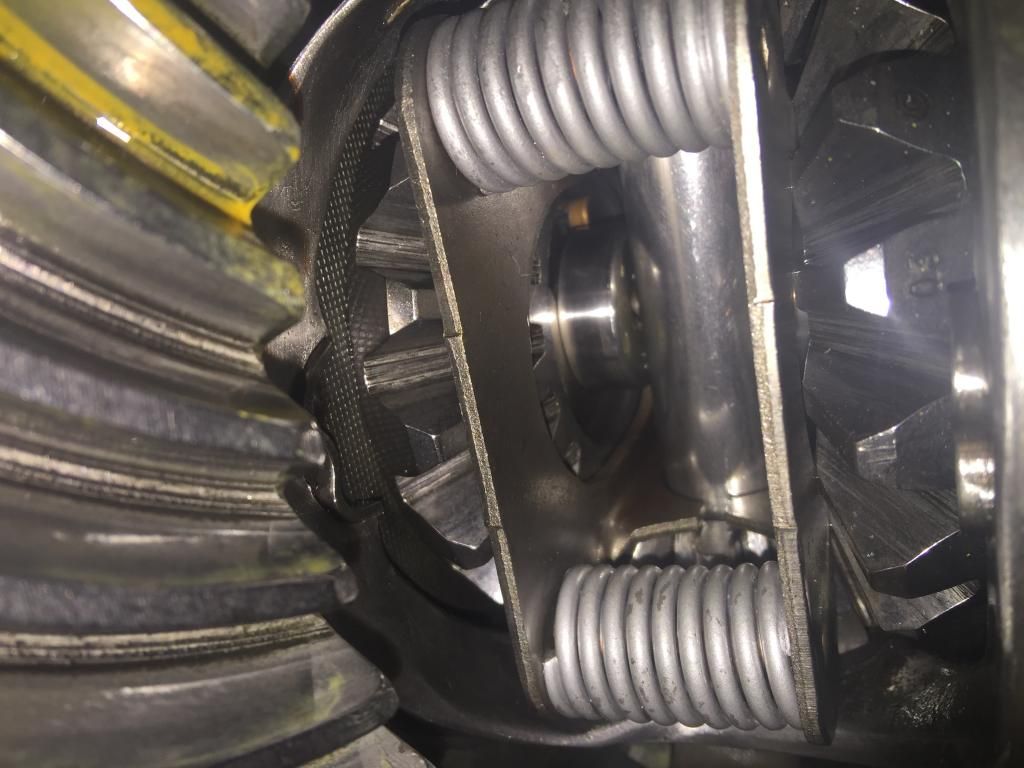
12

13
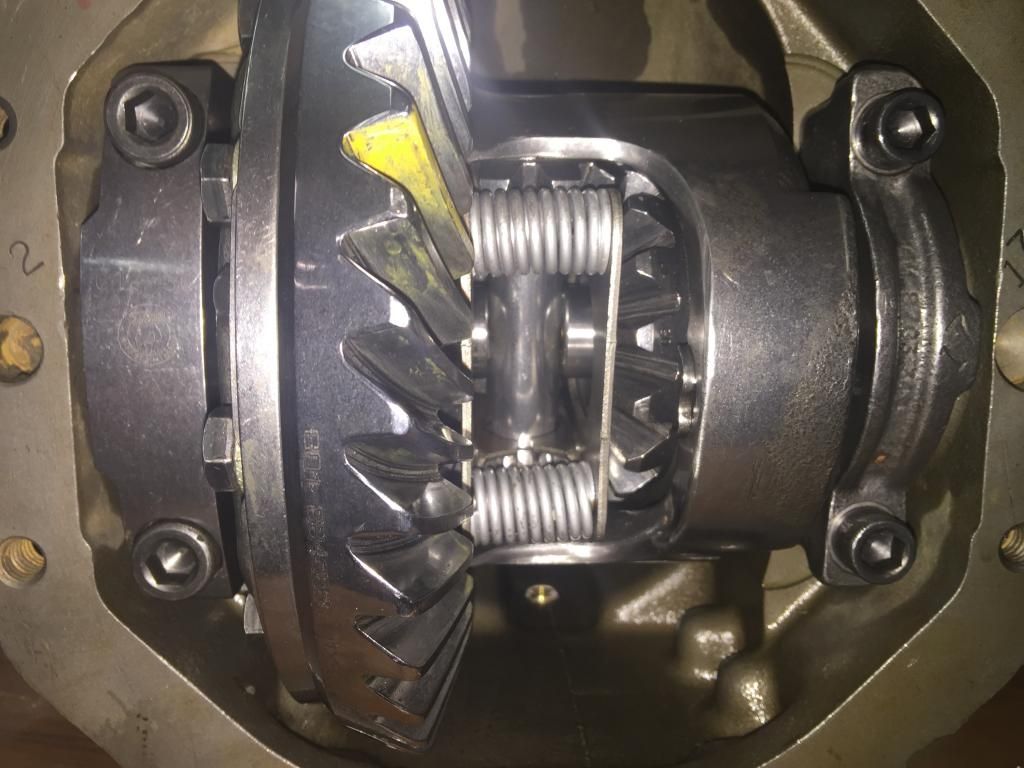
14
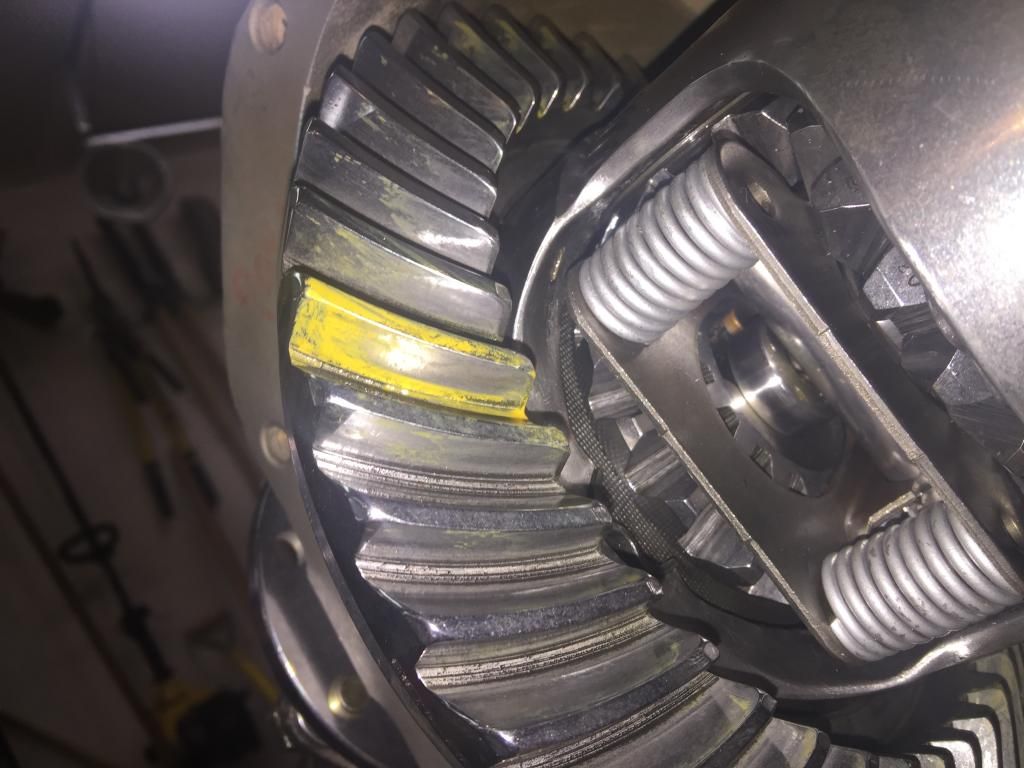
15
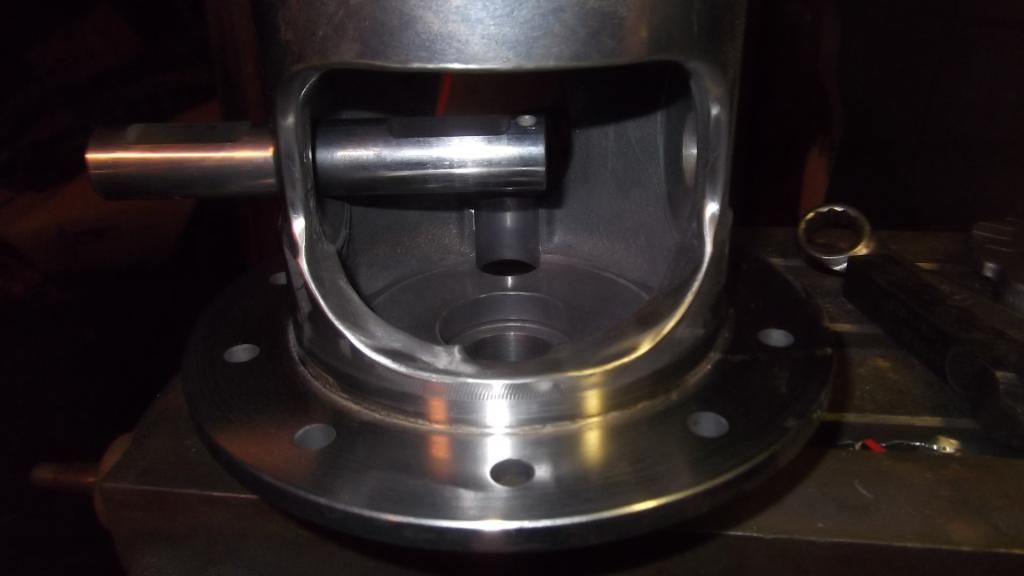
16

Video:

Well, I knew I did not want to go through this again, and with my 650hp 427 it was going to happen over and over again until i do something different... So, I say out to do just this.
One of the first choices was to go to a 12 bolt by Toms... The problem I had with that is the 12 Bolt does not come in the 3.55 ratio that was best for my road racing which match my gearing well.... and i knew the 12 bolt was much heavier to spin up and pull down... Two things that were not acceptable to me... so, there's got to be another way...
So, I set out to build a SUPER 10 Bolt rear end... and here it is....
I will have to let Mike, tracdogg2 give most of the story of what the differences are and how different this rear end is...
My Boys, Danny and Chris, and I have assembled several rear-ends and it is a couple of hours job,,, thats for a standard rear-end,....... this was anything but standard. Mike had to do lathing milling and machine work to make all the larger pieces fit...like larger pin, larger half shafts, and more....
SOME of the differences are:
30 spline half shafts, as compared to 17 spline stock
larger half shafts
larger pin
all gears and all parts completely heat treated, not just tips
known strongest USA made ring and pinion US GEAR
ALL parts Cyro treated
ALL parts REM coated
All parts hand demurred and polished
heavy duty forged cap
Quote from Mike:
I have to admit the cryo did something to the metal. It is definitly denser and harder to cut compared to any other carrier.
Mike
He also stated to me that he had to slow down the lath to 25rpm, something he has never had to do, and went through 3 bits... as he usually never even goes through even 1... this is hard metal.

here are some pics, the first is a video, click it to watch.
2

3

4

5

6

7

8

9

10

11

12

13

14

15

16

Video:
Last edited by pauldana; 12-02-2014 at 02:35 PM.
#2
Race Director


Member Since: Jan 2000
Location: Corsicana, Tx
Posts: 12,626
Received 1,895 Likes
on
923 Posts
2020 C2 of the Year - Modified Winner
2020 Corvette of the Year (performance mods)
C2 of Year Winner (performance mods) 2019
2017 C2 of Year Finalist

That's PURDY!!
Mike does incredible work. You picked the right guy!
JIM
Mike does incredible work. You picked the right guy!
JIM
#3
Race Director


Thread Starter
http://www.cryoscience.com/auto/
Engine internals - rings, main and rod bearings last up to 2 times longer - increases valve spring rates 1 to 3 %
Up to double the life for Manual Transmission Gears and Syncro’s
Automatic Transmissions run up to 50 degrees cooler-less friction=more HP
Ring and Pinion gears last up to twice as long
Disc brake Rotors & Pads last up to 3 times longer
Disc brake Rotors & Pads run up to 120 degrees cooler
REM/ISF Isotropic Superfinish
The ISF-Process is a chemically accelerated vibratory mass finishing process patented worldwide by REM Chemicals, Inc, USA.
Any time two metal parts come into contact with each other, the resulting friction causes heat build up. These high temperatures cause wear and over time reduce efficiency and eventually create the need for replacement. By creating a smooth and shiny finish, the ISF Process improves the life and efficiency of moving metal parts. Increased life translates into lower operating costs as well as better performance.
The ISF Process removes the asperities that are inherent in the manufacturing process. By safely removing these microscopic peaks, the ISF Process leaves a much more uniform surface that reduces friction and allows for increased lubrication capability. While the dimensional integrity of the part remains intact, the result is an improved component that will operate at lower temperatures, have increased durability, quieter operation and increased time between maintenance.
The ISF Process
The ISF Process is a chemically accelerated vibratory mass finishing process which is patented worldwide. The process utilizes conventional vibratory finishing equipment and non-abrasive finishing media to produce an isotropic superfinished surface. It is capable of generating a surface roughness average as low as Ra - 0,02. These isotropic superfinishes achieve the highest performance ratings in terms of friction, heat, noise and wear in the bearing, gear, and turbine industries.
The ISF Process is a physiochemical process. Using high density, non-abrasive ceramic media and conventional vibratory finishing equipment in which large batches of parts can be processed at the same time.
The ISF Process has been tested, proven, certified and is currently in use in many different industries. It is highly successful on parts that operate in extreme environments. The ISF Process is used in military applications and is FAA approved. The results confirm that no matter what your product is, the ISF Process will make a difference in performance, and save time, energy and money.
Motor Sports
In extreme environments, such as automobile or motorcycle racing, every component must work in harmony at 100% capacity. Races are won and lost by fractions of a second, so it all comes down to getting the most power output possible. With the ISF Process, the energy normally lost to friction is now available in the form of increased power output. Once friction is reduced, the engine will run cooler allowing for longer durability of parts and fewer failures. To the high performance racing market - Smooth and Shiny means faster and cooler.
The benefits are:
* Allows a freer movement of parts with less surface resistance
* Improves precision of gear mating resulting in maximum efficiency
* Extends life of parts and reduces risk of part failure during operation
* Increases power density that allows for larger motors or smaller transmissions
* Reduces maintenance expenses and fuel costs
* Increases power output resulting in increased speed
Last edited by pauldana; 12-02-2014 at 01:41 PM.
#4
Racer


im hoping its good for 900 foot lbs tq...
http://www.cryoscience.com/auto/
Engine internals - rings, main and rod bearings last up to 2 times longer - increases valve spring rates 1 to 3 %
Up to double the life for Manual Transmission Gears and Syncro’s
Automatic Transmissions run up to 50 degrees cooler-less friction=more HP
Ring and Pinion gears last up to twice as long
Disc brake Rotors & Pads last up to 3 times longer
Disc brake Rotors & Pads run up to 120 degrees cooler
http://www.cryoscience.com/auto/
Engine internals - rings, main and rod bearings last up to 2 times longer - increases valve spring rates 1 to 3 %
Up to double the life for Manual Transmission Gears and Syncro’s
Automatic Transmissions run up to 50 degrees cooler-less friction=more HP
Ring and Pinion gears last up to twice as long
Disc brake Rotors & Pads last up to 3 times longer
Disc brake Rotors & Pads run up to 120 degrees cooler
Although as a mechanical engineer involved in gear manufacturing and design for 25 years i highly doubt the enormous gain of strength claimed by the cryo process in the ad above (which is wat it is, a commercial advertisement) i absolutely believe a certain amount of increase in strength and durability can be achieved by this process.
I was always curious about the difference between a 10-bolt and a 12 bolt set (apart from the obvious number of bolts). Are the bolts thicker? better material? less shear stress?
What is the actual weakest link in a differential? Ring/gear, bearings/ housings?
Very interested to know.
#5
Race Director


Thread Starter
Great looking rear end.
Although as a mechanical engineer involved in gear manufacturing and design for 25 years i highly doubt the enormous gain of strength claimed by the cryo process in the ad above (which is wat it is, a commercial advertisement) i absolutely believe a certain amount of increase in strength and durability can be achieved by this process.
I was always curious about the difference between a 10-bolt and a 12 bolt set (apart from the obvious number of bolts). Are the bolts thicker? better material? less shear stress?
What is the actual weakest link in a differential? Ring/gear, bearings/ housings?
Very interested to know.
Although as a mechanical engineer involved in gear manufacturing and design for 25 years i highly doubt the enormous gain of strength claimed by the cryo process in the ad above (which is wat it is, a commercial advertisement) i absolutely believe a certain amount of increase in strength and durability can be achieved by this process.
I was always curious about the difference between a 10-bolt and a 12 bolt set (apart from the obvious number of bolts). Are the bolts thicker? better material? less shear stress?
What is the actual weakest link in a differential? Ring/gear, bearings/ housings?
Very interested to know.
I was not a believer in the Cyro process ether.... but i am a believer now... Mike went through 3 bits to cut my carrier, usually he does not even go through 1. Also, he stated he had to put his mill on the lowest speed of 25rpm, which is less than a third of the normal speed he uses.... all this due to increased hardness through the cyro process.
a 12 bolt rear end is BIGGER,,, bigger thicker ring and pinion... thus stronger.
All the serious off road guys (we race the Baja 500 and 1000 for the last 3 years, and almost took 1st in our class last year, but the engine blew at mile marker 498:-( ) are Cyroing there rear-ends and a lot of people now are Cryoing there entire engine.... yes, this stuff really works
#6
Pro


Great looking rear end.
Although as a mechanical engineer involved in gear manufacturing and design for 25 years i highly doubt the enormous gain of strength claimed by the cryo process in the ad above (which is wat it is, a commercial advertisement) i absolutely believe a certain amount of increase in strength and durability can be achieved by this process.
I was always curious about the difference between a 10-bolt and a 12 bolt set (apart from the obvious number of bolts). Are the bolts thicker? better material? less shear stress?
What is the actual weakest link in a differential? Ring/gear, bearings/ housings?
Very interested to know.
Although as a mechanical engineer involved in gear manufacturing and design for 25 years i highly doubt the enormous gain of strength claimed by the cryo process in the ad above (which is wat it is, a commercial advertisement) i absolutely believe a certain amount of increase in strength and durability can be achieved by this process.
I was always curious about the difference between a 10-bolt and a 12 bolt set (apart from the obvious number of bolts). Are the bolts thicker? better material? less shear stress?
What is the actual weakest link in a differential? Ring/gear, bearings/ housings?
Very interested to know.
#8
Drifting


Great looking rear end.
Although as a mechanical engineer involved in gear manufacturing and design for 25 years i highly doubt the enormous gain of strength claimed by the cryo process in the ad above (which is wat it is, a commercial advertisement) i absolutely believe a certain amount of increase in strength and durability can be achieved by this process.
I was always curious about the difference between a 10-bolt and a 12 bolt set (apart from the obvious number of bolts). Are the bolts thicker? better material? less shear stress?
What is the actual weakest link in a differential? Ring/gear, bearings/ housings?
Very interested to know.
Although as a mechanical engineer involved in gear manufacturing and design for 25 years i highly doubt the enormous gain of strength claimed by the cryo process in the ad above (which is wat it is, a commercial advertisement) i absolutely believe a certain amount of increase in strength and durability can be achieved by this process.
I was always curious about the difference between a 10-bolt and a 12 bolt set (apart from the obvious number of bolts). Are the bolts thicker? better material? less shear stress?
What is the actual weakest link in a differential? Ring/gear, bearings/ housings?
Very interested to know.
When I get a chance I will go deep into the differences between a 10 and 12 bolt and actual build procedures. This will upset a few certain people and will be based strictly on my opinion and experience.
I will also be doing a loaded rotational resistance test on upcoming builds. Since there is no data on this I am using Paul's diff as a 0 baseline. This is to determine reduced resistance from the REM polishing. Without measuring other diffs I can already tell Paul's diff has less resistance and rotates much smoother than a diff without polished gears. Pinion depth changed 6 thousandths on the average because of the polishing. I just sent Paul over 150 pictures so this thread is going to get pretty long.
Mike
#10
Racer


I've been researching diff options for my own car as well. It doesn't look like the posi was tuned to get rid of those springs... why?
#11
Team Owner


Member Since: Oct 2004
Location: altered state
Posts: 81,242
Received 3,043 Likes
on
2,602 Posts
St. Jude Donor '05

Interesting to see how it holds up
On the cap bolts do those use a shouldered type bolt typically also never seen lockwashers used on the posi but haven seen a C3 rear apart in a long time. just wondering.
What was pricing like on the cryo-polish?
On the cap bolts do those use a shouldered type bolt typically also never seen lockwashers used on the posi but haven seen a C3 rear apart in a long time. just wondering.
What was pricing like on the cryo-polish?
#12
Drifting


The pre load springs have nothing to do with tuning the posi. They are more for driving conditions. The clutches need to have torque applied to engage. Guys who are drag racing, autocrossing, or just drive their cars spirited can benefit not using the springs. For guys that use their cars for daily use, especially on snow and ice, need the springs. Also for road courses where they have to feather the gas thru a sweeper and gently accelerate out of a corner. In this case it's Paul's choice if he wants to use them or not. Either way the posi is tuned.
Mike
Mike
#13
Drifting


Mike
#14
Race Director


Yep, that's what I've noticed on mine where we left the springs out. Normal driving there's no difference (I don't do snow & ice). If I'm going around a tight corner like right-turn-on-red and give it some gas there's a sudden point where the posi hits and the inner wheel squeals. But it's nothing unsettling and I wouldn't discourage anyone from removing the springs.
#17
Le Mans Master


Someone has already asked but, no answer yet.....what did the cryogenic processes run for all those purty shiny parts? Where was it done....turn around time? Thanks!
#18
Race Director


You add shims behind the clutch packs. What you're looking for is just barely perceptible play in the spider gears with the clutch pack compressed.
I'd think this becomes more important if you leave the springs out.
I'd think this becomes more important if you leave the springs out.
#19
Racer



#20
Race Director


I know that, but in this instance it was decided to leave the springs in. Wondering why and what else was done to call it a 'tuned posi'. Do the springs and plates represent a weak spot in an otherwise stronger differential? Just trying to learn the ins and outs here. Thanks 

The following users liked this post:
BlowAMouse (12-13-2016)





